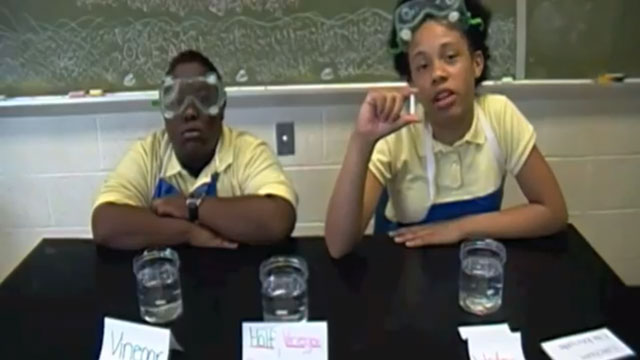This video was created by the members of the Drew-Freeman Middle School Climate Science Academy (CSA). The 30 students of the CSA have expressed interest in a career in the sciences and will be supported and mentored through college and graduate school in Climate Science.
This video was created based on the research of Dr. Jane Lubchenco, administrator of the National Oceanic and Atmospheric Administration (NOAA). This video demonstrates the effects of ocean acidification on marine life. Ocean acidification occurs when carbon dioxide from the atmosphere reacts with water in the ocean to produce carbonic acid.
The increasing amounts of Carbon Dioxide in the atmosphere as a result of fossil fuel burning and other sources has led to increasing amounts of ocean acidification in our oceans. In the first experiment, students added dry ice (the solid state of carbon dioxide) to solutions of water.
Bromethyl Blue, an indicator, was added to a cup of tap water. In the presence of CO2, the water will turn yellow. After adding dry ice to the water and bromethyl blue solution, the cup turned yellow, indicating the presence of CO2 in the water. In the second experiment, the students put pieces of chalk into solutions of acid to show the effects of acid on calcium carbonate, the main ingredient in chalk. The skeletons of marine critters are made of calcium carbonate.
